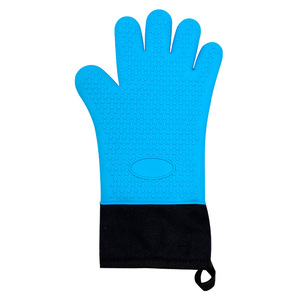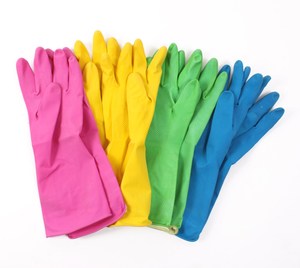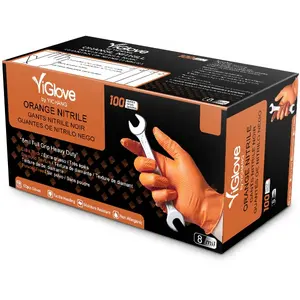(1924 products available)







































































































































































































![[HAYANSON] the Most Comfortable Fit on the Hands and Hard Rubberlab Household <strong>Rubber</strong> <strong>Gloves</strong> Long Color](http://s.alicdn.com/@sc04/kf/A1ac2b15937064d0384a2c2fd018deef70.jpg_300x300.jpg)
![[HAYANSON] the Most Comfortable Fit on the Hands and Hard Rubberlab Household <strong>Rubber</strong> <strong>Gloves</strong> Long Color](http://s.alicdn.com/@sc04/kf/A1cf8856cee6d4e5aa160fe5ba218eba3D.jpg_300x300.jpg)
![[HAYANSON] the Most Comfortable Fit on the Hands and Hard Rubberlab Household <strong>Rubber</strong> <strong>Gloves</strong> Long Color](http://s.alicdn.com/@sc04/kf/Acb82dac9bb7f42338052a70f2beefe47d.jpg_300x300.jpg)
![[HAYANSON] the Most Comfortable Fit on the Hands and Hard Rubberlab Household <strong>Rubber</strong> <strong>Gloves</strong> Long Color](http://s.alicdn.com/@sc04/kf/A8a5f0ed80dd1401a938a932c58e84c7aE.jpg_300x300.jpg)
![[HAYANSON] the Most Comfortable Fit on the Hands and Hard Rubberlab Household <strong>Rubber</strong> <strong>Gloves</strong> Long Color](http://s.alicdn.com/@sc04/kf/Aaaac58e3e53645eab492f1573503c390h.jpg_300x300.jpg)
![[HAYANSON] the Most Comfortable Fit on the Hands and Hard Rubberlab Household <strong>Rubber</strong> <strong>Gloves</strong> Long Color](http://s.alicdn.com/@sc04/kf/A422ef9d96fbe4b39aa6c8c0e23e2902eC.jpg_300x300.jpg)


















Rubber glove mittens are designed to protect the hands from various hazards, including chemicals, liquids, and extreme temperatures. Depending on the material, they come in different shapes and sizes to ensure safety and comfort. Below is a concise overview of the material composition of rubber glove mittens:
Natural Rubber (Latex)
Widely used for many rubber glove mittens, natural rubber gloves are made from the latex of rubber trees. They are popular for their elasticity, tear resistance, and fit. However, they are not suitable for handling oil or petroleum-based products.
Nitrile Rubber
Also known as acrylonitrile-butadiene rubber, nitrile rubber is a synthetic material resistant to oil, gasoline, and many chemicals. This makes nitrile glove mittens ideal for tasks involving hazardous substances. They are also puncture-resistant and provide good grip.
Neoprene
Neoprene gloves are made from polychloroprene, a synthetic rubber glove mitten. These gloves resist oil, chemicals, heat, and cold. They are also waterproof and provide good protection against hazardous substances. Due to their flexibility and comfort, they are widely used in many industries.
Butyl Rubber
Butyl rubber is a synthetic polymer made from isobutylene and isoprene. It has good air barrier properties and is resistant to acids, alkalis, and other chemicals. Butyl rubber glove mittens are also insulated against gases and provide good protection against chemical hazards.
Viton
Viton is a brand name for a type of fluoroelastomer. It has high resistance to heat, chemicals, and corrosives. This makes Viton glove mittens suitable for tasks involving high temperatures or aggressive chemicals. They are also expensive due to their specialized properties.
These are some of the common materials used in rubber glove mittens. Each material has unique properties that make it suitable for specific applications and industries. Therefore, choosing the right glove mitten for the task at hand is essential to ensure safety and performance. With these rubber glove mittens, one can ensure maximum protection for hands while doing hazardous jobs.
There are numerous designs of rubber glove mittens to meet diverse needs. Each design has its unique features and advantages, making it suitable for various applications and environments where hand protection, warmth, and functionality are required.
Regular rubber glove mittens
Regular rubber glove mittens are among the most common designs. They come in various sizes and are primarily used in commercial and industrial settings. Regular rubber glove mittens are designed to be durable and easy to wear. They are made from thick rubber that withstands wear and tear and protect hands from chemicals, water, and other hazardous substances.
Textured rubber glove mittens
Textured rubber glove mittens are designed with a textured surface, providing a better grip. The texture is usually found on the palms and fingers of the mittens. This design feature is essential for tasks that involve handling wet or slippery objects. The rough surface ensures that the mittens grasp things firmly, reducing the chances of accidents due to dropped items.
Insulated rubber glove mittens
Insulated rubber glove mittens are designed for cold environments. They are made with a layer of insulating material that retains body heat. Insulated rubber glove mittens are typically used in outdoor activities such as fishing, hunting, or working in snowy conditions. They provide both protection from cold weather and the usual safeguards against water and danger.
Rubber glove mittens with cuffs
Rubber glove mittens with cuffs have an extended portion at the wrist. Cuffs help to keep the mittens in place and prevent water or debris from entering. Cuffs are typically rolled or folded and can be secured with straps or fasteners. They provide extra protection and help keep the mitten on during use.
Disposable rubber glove mittens
Disposable rubber glove mittens are made for single use. They are lightweight, made from thin rubber, and designed to be used once and thrown away. Disposable rubber glove mittens are commonly used in healthcare settings, food service, and other areas where maintaining cleanliness and preventing cross-contamination is vital. Despite being lightweight, they provide essential protection for the hands.
Flame-resistant rubber glove mittens
Flame-resistant rubber glove mittens are designed for situations where there is a risk of exposure to flames or hot surfaces. They are made from rubber treated with flame-resistant chemicals. This design prevents the mittens from catching fire or reducing the risk of burns. Flame-resistant mittens are often used in industries such as firefighting, oil and gas, and metalworking, where workers face higher risks of heat and flames.
Rubber glove mittens have different applications in the healthcare industry, the food industry, and the home industry.
Healthcare Industry
In hospitals, clinics, and nursing homes, healthcare providers wear rubber glove mittens to prevent cross-contamination between patients. When performing procedures like wound dressing, blood sampling, and bed bathing, the healthcare provider uses rubber glove mittens to handle contaminated materials safely. During surgeries, rubber glove mittens are worn to keep the surgical field sterile and to protect against blood and body fluid exposure. When handling sharps like needles and scalpels, the rubber glove mitten provides an extra layer of protection from accidental cuts and exposure to blood. In isolation units for patients with contagious diseases, such as influenza or tuberculosis, the healthcare provider uses rubber glove mittens to prevent the spread of infectious agents. In critical care units, such as ICUs, where there is a high risk of infection, caregivers use rubber glove mittens to handle invasive devices like catheters and ventilator hoses.
Food Industry
In restaurants and catering services, chefs and food handlers use rubber glove mittens when cooking and serving food. This prevents contaminants from hands coming into contact with food. In large-scale food processing and packaging plants, workers wear rubber glove mittens to maintain hygiene standards while handling raw materials and packaged products. In grocery stores and supermarkets, customers can wear disposable rubber glove mittens when touching fruits, vegetables, and other food items at salad bars to ensure food safety. In settings like hospitals, schools, and nursing homes, where large-scale food delivery is done, servers use rubber glove mittens to ensure food safety and prevent hand contaminants from entering food.
Home Industry
When cleaning the home with harsh chemicals, individuals use rubber glove mittens to protect the skin from chemical burns. In the kitchen, when handling hot pots and pans, especially those involving deep frying, the rubber glove mitten provides insulation against heat and prevents hand burns. In cold climates, rubber glove mittens are a good accessory to have alongside warming clothes as they help trap body heat and keep hands warm. During gardening tasks, such as pruning thorny bushes or handling chemicals like pesticides and fertilizers, the rubber glove mitten protects the hands from injuries and chemicals.
Wholesale buyers should consider the following factors when choosing rubber glove mittens.
Product Specifications
Confirm that the product specifications match the needs. Check the weight of the rubber material. Choose heavier rubber glove mittens for tough tasks and lighter mittens for light-duty tasks. Confirm that the gloves have the right fit and the right length for the intended use. Check for additional features like antimicrobial treatment, textured palms, and slip resistance.
Manufacturer's Reputation
Choose suppliers with a reputation for quality and safety. The supplier should comply with industry standards for product testing and certification. They should have a history of using quality materials to produce durable and safe rubber glove mittens.
Certifications
Check for relevant certifications for the rubber glove mitten. They should have ANSI/ISEA 105 for glove performance and ASTM D6319 for the material performance of the gloves. The rubber mittens should also have CE and FDA certifications for safety and quality standards.
Cost and Budget
Get quotes for rubber glove mittens. Look for options that offer the best value within the budget. Consider the trade-off between cost and quality. Avoid compromising on quality, especially for gloves intended for hazardous environments.
Lead Time and Supply Chain Considerations
Evaluate the supplier's lead time for fulfilling orders. Choose suppliers that can deliver orders promptly to avoid stockouts. Check the availability of the rubber glove mittens. Ensure that they have enough stock to meet large or sudden orders.
Market Trends and Consumer Preferences
Research market trends in the rubber glove mitten segment. Identify popular styles, colors, and designs. Understand the preferences of the end users. Select rubber mittens that will have high demand in the marketplace.
Q1: Why are rubber glove mittens used?
A1: Rubber glove mittens are protective gears designed to keep hands safe from harsh chemicals, liquids, and potential injuries. They are used in industries like healthcare, food service, and construction.
Q2: What are the benefits of using rubber glove mittens?
A2: These mittens provide protection, improve grip, and reduce hand fatigue. They also come in various sizes and designs to fit different needs.
Q3: How should rubber glove mittens be worn?
A3: To wear rubber glove mittens, one should select the proper size, check for damages before wearing, and ensure they fit snugly but not too tight. They should be worn with the cuffs extending over the sleeves for added protection.
Q4: Can rubber glove mittens be reused?
A4: Many rubber glove mittens are reusable after thorough cleaning and disinfection, while others are single-use and should be disposed of properly after use.
Q5: How does one store rubber glove mittens?
A5: Store rubber glove mittens in a cool, dry place away from direct sunlight to extend their lifespan and maintain their protective properties.